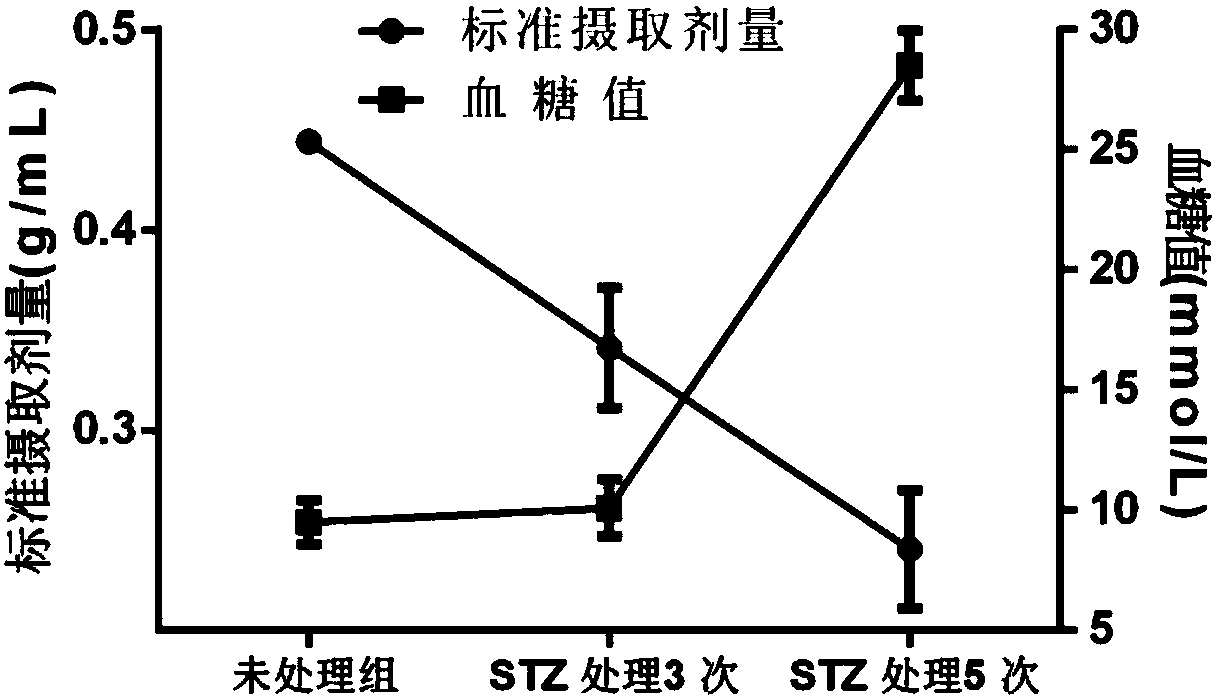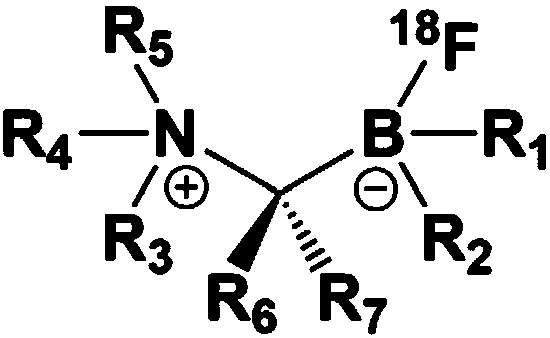Radioactive molecular probe and application thereof in detection of living pancreas islets
A molecular probe and radioactive technology, which is applied in the field of radioactive molecular probe and its application in the detection of living pancreatic islets, can solve the problem that the influence of islet activity is difficult to evaluate
- Summary
- Abstract
- Description
- Claims
- Application Information
AI Technical Summary
Problems solved by technology
Method used
Image
Examples
Embodiment 1
[0039] The preparation of embodiment 1 glycine boron trifluoride precursor
[0040]
[0041] Specifically: the temperature is controlled at 10°C, in a 100mL round-bottomed flask, dissolve 1g of iodomethylboronic acid pinacol ester in 35mL of THF, stir for 10min, after the solution is cooled, add 10 times the equivalent of the newly prepared methylamine solution , continue to react for 30 min, after the reaction is completed, spin dry, and pass through a silica gel column to obtain 300 mg of glycine boron trifluoride precursor (white solid), with a yield of 27.8%.
Embodiment 2
[0042] Example 2 Preparation of Radioactive Molecular Probe X1
[0043]
[0044] In this scheme, free fluoride ions in the reaction system are removed through a neutral aluminum column, and the elution system is physiological saline.
Embodiment 3
[0045] Example 3 STZ-induced diabetes modeling in mice
[0046] Experimental principle: STZ (a broad-spectrum anticancer drug) was once used to treat giant insulinoma, which can destroy pancreatic islet β cells, and repeated small-dose injections can cause diabetes.
[0047] Experimental steps:
[0048] 1. Select 30 mice, weighing 170-220 g, aged 4-6 weeks. The mice were fed with conventional pellet diet and had free access to drinking water. The room temperature in the laboratory is kept at 18-22°C, and the animals are fed normally for one week.
[0049] 2. Tail vein blood glucose measurement and body weight.
[0050]3. Divide the mice into three groups, ten in each group, and use STZ to create a model. Among them, the first group was used as a control group and fed normally. The second group used STZ solution (STZ was dissolved in 0.1 mol / L citrate buffer, prepared before use), and was injected continuously for three days according to each dose of 40 mg / kg, once a day. ...
PUM
 Login to View More
Login to View More Abstract
Description
Claims
Application Information
 Login to View More
Login to View More - R&D
- Intellectual Property
- Life Sciences
- Materials
- Tech Scout
- Unparalleled Data Quality
- Higher Quality Content
- 60% Fewer Hallucinations
Browse by: Latest US Patents, China's latest patents, Technical Efficacy Thesaurus, Application Domain, Technology Topic, Popular Technical Reports.
© 2025 PatSnap. All rights reserved.Legal|Privacy policy|Modern Slavery Act Transparency Statement|Sitemap|About US| Contact US: help@patsnap.com



